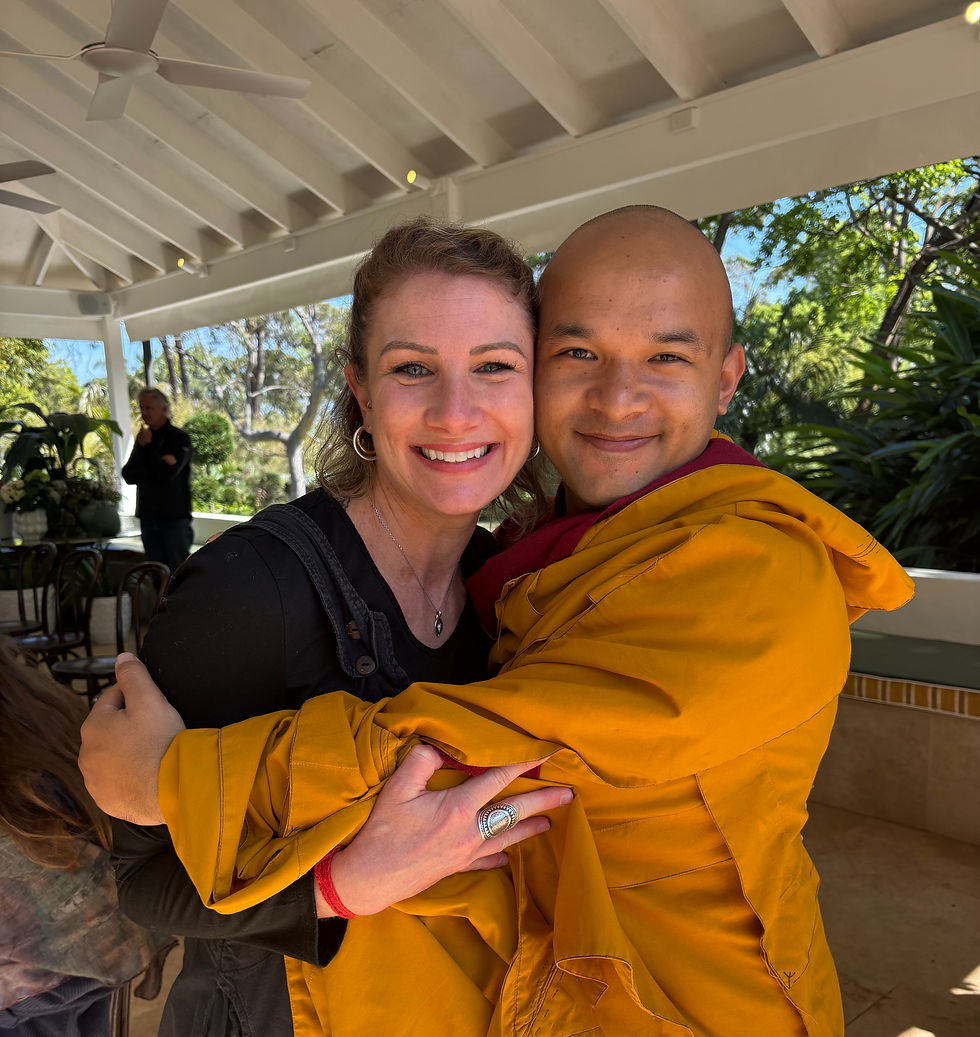The Fluidic Body
- Laurin Vassella

- Aug 5, 2022
- 3 min read
by Intan Ridwan
I always like to invite people to shake, jiggle or roll the body before or between movements during yoga class. Logically, it makes sense to loosen and release stiffness. But not only that, physiologically, it is essential to stimulate the production of synovial fluid in your joints. When the joints move smoothly, you lower the risk of pulling a muscle or injuring one of your tendons and ligaments.
But we know that not only in the joints but the whole human body contains fluid. Our body and its fluid content have a composition very similar to ocean water. Donna Farhi explained it beautifully by saying; "that it is not a far leap to say our human body is an encapsulation of the primordial sea from which we came."(1)
You can explore this in your yoga asana practice by focusing on the smooth transitions while you move from position to position and sustain the circulation of fluids. Feel the internal scaffolding of your skeleton suspended within your fluid body.

Moving from within
When we become more aware of our inner bodies, there's a shift in our brain that would allow what is usually expressed as body-and-mind-connection. Donna Farhi described in her book that when we initiate movement from the core, our inner experience becomes more and more congruent with our outer actions. Postures unfold as a result of an inner opening and expansion that is communicated to the outer container. (2)
We no longer think about how far we think we should be able to go or what we should look like in a posture. But we begin to listen to the voice of our inner perceptions and trust ourselves to act from them.
Yoga sequence to improve digestion
This month, we focus on a yoga practice that benefits the digestive system.
This system contains organs essential in supporting the continuity of your body by digesting the food we eat so that your body can absorb the nutrients.
The digestive organs are also crucial in supporting the body's structure. For example, the large intestine is the energetic support for the legs when you're in the tree pose. And the whole digestive tract is the frontal support of the spine when you're in the cobra pose and acts as a cushion in the abdomen.
The digestive organs are considered beyond our conscious control. They are made of muscles, and their functions are regulated by the parasympathetic branch of the central nervous system. It means we are unable to control the way they work directly.
You can support the functions of your digestive organs by working to activate the parasympathetic system dominance so that your mind becomes relaxed and your body can maintain its rest-and-digest mode to allow the efficiency of the digestive system.
Meditation
To complement this yoga asana practice is the Inner Body and Digestive Tract Meditation to help you build awareness of your inner body, specifically the organs that make up the digestive tract.
Pranayama yogic breathing, advantages and benefits
As an option, I'd also like to invite you to explore the yogic breathing practice this month.
In normal, quiet and unconscious breathing, only a very small volume of fresh air actually enters the alveoli in the lungs with each breath.
Yogic breathing allows a much larger quantity of air reaches the lungs and inflates more alveolar tissue, which means a greater expanse of the alveolar membrane becomes available for gas exchange.
In normal and unconscious breathing, some alveoli may remain closed and collect secretions, causing them to become prone to disease, which yogic breathing helps to reduce this possibility.
Footnotes:
(1.) (2.) Yoga Mind, Body & Spirit: A Return to Wholeness, Donna Farhi. Henry Holt and Company. (2000, p.61, 65).
JOIN INTAN on SATURDAYS @ 1:00-2:15pm for "YOGA FOR HEALTHY AGING"
ALL WELCOME



Comments